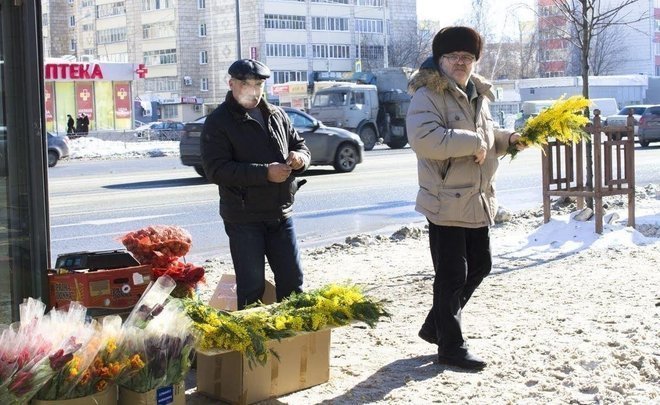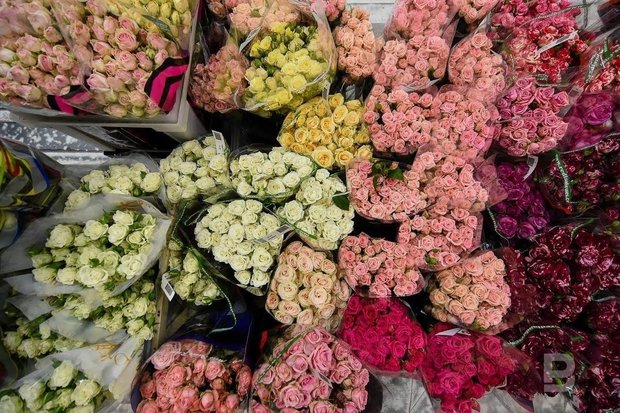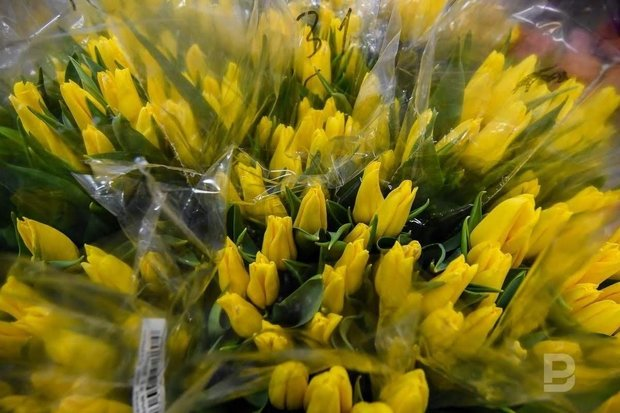‘Thanks’ to pandemic and customs tariffs: why flower prices skyrocket
Flowers traditionally went up in price on the threshold of 8 March, but not only Women’s Day is the culprit

A rise in prices for foods was followed by growth in prices for a no less popular good — flowers. The price for a bunch increased by 30-50%. But the tradition of presenting them by 8 March stays: florists’ and stores saw an inflow of male buyers. Carnation is the cheapest flower here (from 49 rubles per flower), lilies are the most expensive (from 350 rubles). But chain supermarkets offer the lowest prices — a bunch of five small tulips can be found here for 169,90 rubles.
Symbol of royal power for “royal” price
On the eve of Women’s Day, Realnoe Vremya’s analytic staff figured out the price of flowers in retailers and specialised stores in Kazan a day before 8 March and how their price changed compared to last year. As usual, the price range for the same products turned out to be big and total from 20 to 150 rubles per flower. This is why thrifty people can have read our report.
Carnation (from 49 to 120 rubles per flower), iris (from 60 to 120 rubles) and tulip (from 60 to 100 rubles) are the three cheapest options. The “queen of flowers” — rose — costs from 100 to 280 rubles per flower depending on the length of the stalk. While the price for small Kenyan roses starts from 50 rubles.

The price for gerbera fluctuates from 150 to 250, Peruvian lily — from 120 to 180 rubles. The traditionally inexpensive chrysanthemum will not come cheap today — a large flower is offered for 200-300 rubles. But lily became the most expensive sample — the price starts from 350 rubles and reaches 500 rubles.
Our analysts calculated: though prices for flowers increased in general, some didn’t become costlier in some florists’.
However, the price for chrysanthemums rose by 108-125% in some places. Spray roses doubled in price in some stores too.
Shortage of flowers and closure of borders
Flower sellers themselves say that the price tag for their products rose by 30-50%. And not the festive fuss is the case when a day counts as a month. It is mainly a hangover from the coronavirus pandemic.

Other important factors — customs tariffs and a higher dollar and euro rate — influenced the end price too.
“Many foreign nurseries and greenhouses slowed down during the pandemic and haven’t yet resumed their activity. While the technology is so that you cannot turn it off and then simply turn it on. This is why even those who resumed work didn’t manage to cover the deficit of flowers. The shortage in the market influenced the growth of prices, also, the dollar and euro rate greatly influences the price. What is more, the Belarusian customs closed on 4 February, all commodities now go through Russian borders, while customs rates are much higher there, by around 30%. All this overlapped and caused a 30-40% rise in prices for flowers on average,” Director of Flower Paradise Rinat Ageyev provided the calculations in a talk with our newspaper.
The political decision to close the Belarusian border for Russian imports couldn’t help but influence the workload of our customs workers. For instance, Ildar Timerbayev said that a lorry with flowers ordered by his company by Valentine’s Day hadn’t arrived yet. Goods for 9 million rubles got stuck on the border. And a lot of wholesale companies thatplanned to improve their budgets on 14 February carried such losses. Clearly, now they will start minimising the losses by raising prices.

Bad weather impacts silver wattle’s price
According to the sellers themselves, no matter how circumstances unfold, flowers are always in demand. The demand simply shifts from more expensive to cheaper options. For instance, it is tulips, an ambassador of spring. It is the most marginal flower for sellers now.
Women have traditionally been presented twigs of mimosa by 8 March since the Soviet era. In fact, it is called silver wattle, while mimosa looks different. No matter how these flowers are called, the yellow bunch of flowers isn’t as popular as it was anymore. It also became expensive, by the way.

Chain stores did something for those who are short of money. The most economical option can be found here — five small tulips that have not blossomed yet for 169,90 rubles. While a bunch of 15 flowers will cost much more — 559,90 rubles.
Here is another life hack. Not all women like cut flowers. Famous chain stores offer them potted hyacinths from 69,99 rubles and roses — up to 300 rubles. After they stop blossoming, they can be replanted in the soil in the garden.